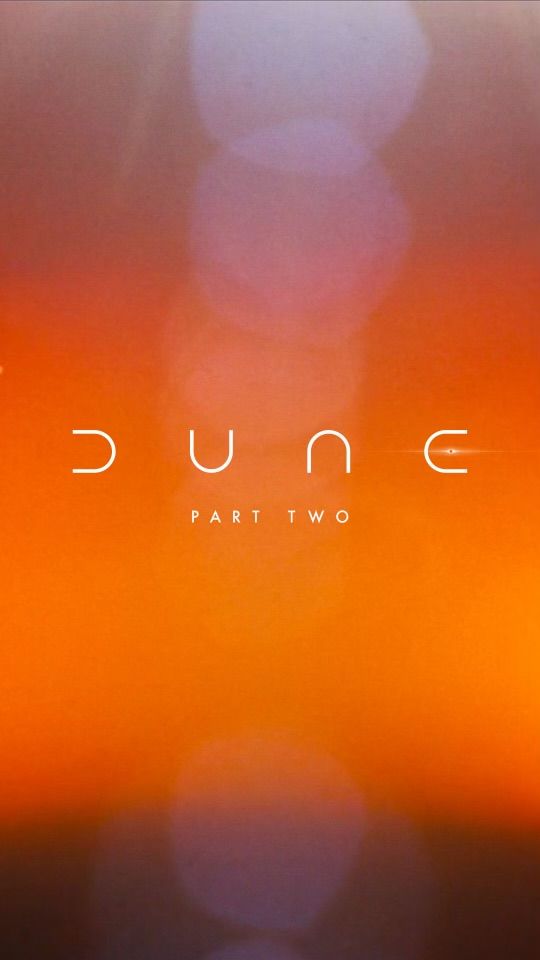The Big Picture
- Denis Villeneuve's Dune: Part Two is set to be released in IMAX 70mm, offering audiences a beautiful and immersive viewing experience.
- The success of Oppenheimer in IMAX 70mm highlighted the merits of the format and created a demand for future releases to utilize it.
- 70mm film surpasses digital formats like 4K in resolution and aspect ratio, delivering a more intricate and cinematic image, making it ideal for films like Dune.
Denis Villeneuve's Dune: Part Two is set to be the next blockbuster release to aim for a major run on IMAX 70mm following the phenomenal success of Oppenheimer using the format this year. Villeneuve's eagerly awaited sequel releases next year, and continues the story of Timothée Chalamet's Paul Atreides as he seeks revenge for the murder of his father, among many other story strands. And now audiences will be able to see the film in the most beautiful quality imaginable.
If there's one thing the release of Oppenheimer highlighted, then perhaps it was the merits of not just IMAX, but IMAX film, and in particular, 70mm IMAX. Championed by Christopher Nolan as the "gold standard" of filming, the pristine presentation of the director's work was crafted so beautifully that it created a demand almost impossible to supply to everyone who wanted to see it.
It did, however, mean that future film releases would perhaps try to jump on the bandwagon and try to mimic that success. For film fans, this is tremendous news. Reminiscent of the boon of 3D when Avatar was released, every studio suddenly wanted in on the gimmick to varying degrees of success. By the time the craze died down, audiences were sick of being ripped off for bad retrofitting jobs for films that just didn't justify the extra costs. Despite the advent of 3D and cheap knock-offs, though, more films shot in IMAX 70mm are just a win for the audience and nothing more.
What Does IMAX 70mm Mean?
The technical difference between shooting on film versus digital is a bigger one than you might imagine. Our handy guide to IMAX 70mm can give you more information, but in a shortened format, we know this much. Ultra HD, commonly referred to as 4K cinema, offers an image quality four times superior to 1080p HD, featuring a resolution of 4096x2160 pixels. In comparison to 35mm film, 70mm film surpasses it with significantly higher resolution, resulting in a more intricate and detailed image. While Dune Part Two was shot on IMAX, it used large format digital cameras, not film cameras.
Additionally, 70mm boasts a broader aspect ratio than 4K, contributing to a more immersive viewing experience. While both formats have their respective advantages and disadvantages, 70mm is widely regarded as the "premium" format, delivering a more cinematic experience for viewers to enjoy. This makes it ideal for a film like Dune, which has been filmed for IMAX by Villeneuve, who is a major proponent of film over digital, like his contemporaries, Nolan, Kenneth Branagh, and Quentin Tarantino. As Nolan stated himself:
“[The] sharpness and the clarity and the depth of the image is unparalleled. The headline, for me, is by shooting on IMAX 70mm film, you’re really letting the screen disappear. You’re getting a feeling of 3D without the glasses. You’ve got a huge screen and you’re filling the peripheral vision of the audience. You’re immersing them in the world of the film.”
When Will 'Dune: Part Two' Be Released?
Dune: Part Two was originally slated for November of this year but was moved to March 15, 2024, to guarantee that its stars would be able to participate in the press leading up to its release. While it's not as soon as we'd hoped, yesterday it was announced that, with the strike concluded, the film would be shifting release dates to March 1. Stay tuned at Collider for further updates.

Dune: Part Two
Paul Atreides unites with Chani and the Fremen while seeking revenge against the conspirators who destroyed his family.
- Release Date
- March 1, 2024
- Director
- Denis Villeneuve
- Cast
- Timothee Chalamet , Stellan Skarsgård , Florence Pugh , Zendaya , Rebecca Ferguson , Javier Bardem
- Runtime
- 166 minutes
- Main Genre
- Sci-Fi


